If you periodically blow air on them with a straw in the bivouac, they’ll give up on the location. Myrmy’s Law in full effect right there.
I am new to antkeeping, what's myrmy's law?
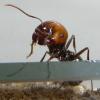
If you periodically blow air on them with a straw in the bivouac, they’ll give up on the location. Myrmy’s Law in full effect right there.
I am new to antkeeping, what's myrmy's law?
If you have permits to ship pheidole californica to washington pls lmk
Keeping:
Solenopsis molesta
Pogonomyrmex occidentalis
Tetramorium immigrans
Camponotus modoc
2 lasius queens (prob pallitarsis)
If you periodically blow air on them with a straw in the bivouac, they’ll give up on the location. Myrmy’s Law in full effect right there.
This is a very good suggestion.
I actually blew on the TarHeel nest to make them leave that.
I just did not want to break up their temporary home last night. These ants are diurnal, and what a surprise, during the night, nothing has happened. But now I can see scouts running around in the arena, hopefully they will discover the new nest soon. I can blow all I like, if the ants do not know of an alternative, they will just be confused on what to do next.
I give them a couple of days, and leave the heat on for the wood nest, and then I can start blowing.
If you periodically blow air on them with a straw in the bivouac, they’ll give up on the location. Myrmy’s Law in full effect right there.
I am new to antkeeping, what's myrmy's law?
"Ants will do as they like."
Ants will do what they think best, because of all their sensory traits and instincts, which are much better than ours, and this often means they will do exactly the opposite of what we, the keepers, want them to do. And they can be very stubborn.
Edited by Ernteameise, October 6 2025 - 11:08 PM.
Latest update:
The first scouts have found their way into the wooden nest.
Some are climbing up and down their "rope ladder".
Two weird ants have decided to hang out in the nest and just sit there, I think they are sleeping.
Baby steps.
Oooohhh....
correction!
There is movement!
More and more ants are coming along, I just have seen a tandem walk to the rope ladder (one ant walking in front, one follows closely).
So the democratic decision, if the nest is to be accepted, as begun.
The scouts have checked it out, the "test sleepers" seem to have approved, and now recruiting has begun.
How exciting.
As a proof that I am not telling tall tales- here are pictures of what is happening right now.
The colony is full of excitement.
There is lots of movement.
Ants are running up and down the rope ladder:
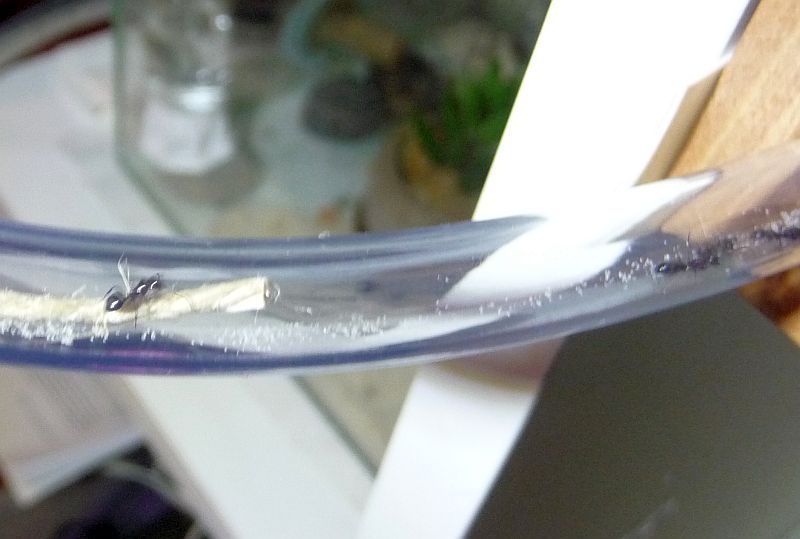
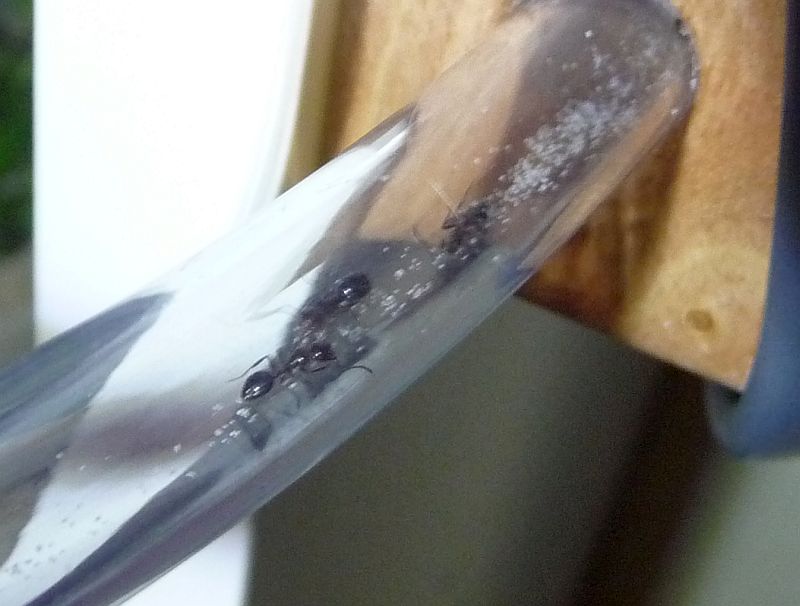
And they inspect the nest, very likely they appreciate the heating cable
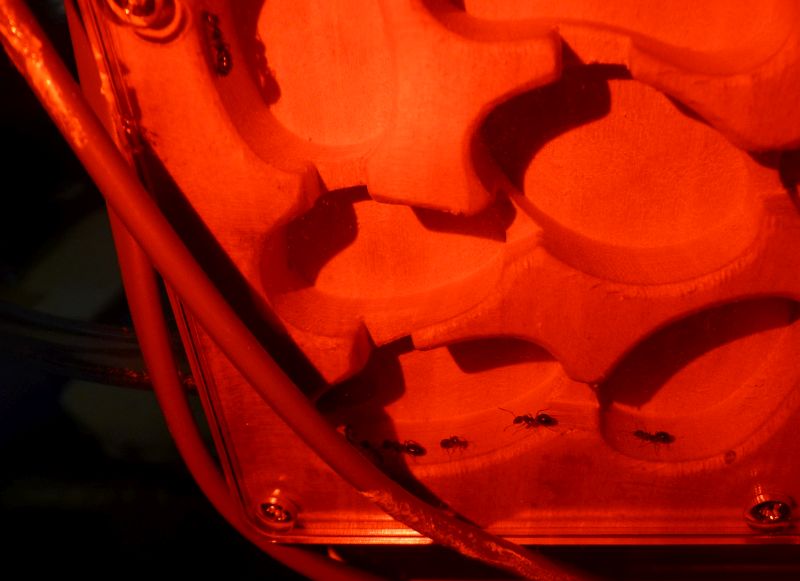
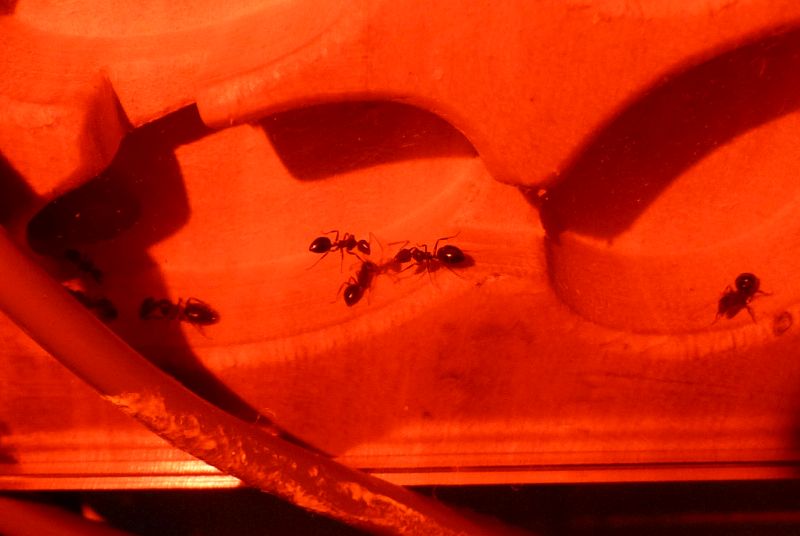
And all of this without blowing them out of their temporary bivouac. I just took one brave scout finding the heated home, and she seems to have them convinced that this is better than sitting out in the open on a piece of wooden decoration.
OMG!
This escalated quickly!
Another 20mins later, and the situation has snowballed.
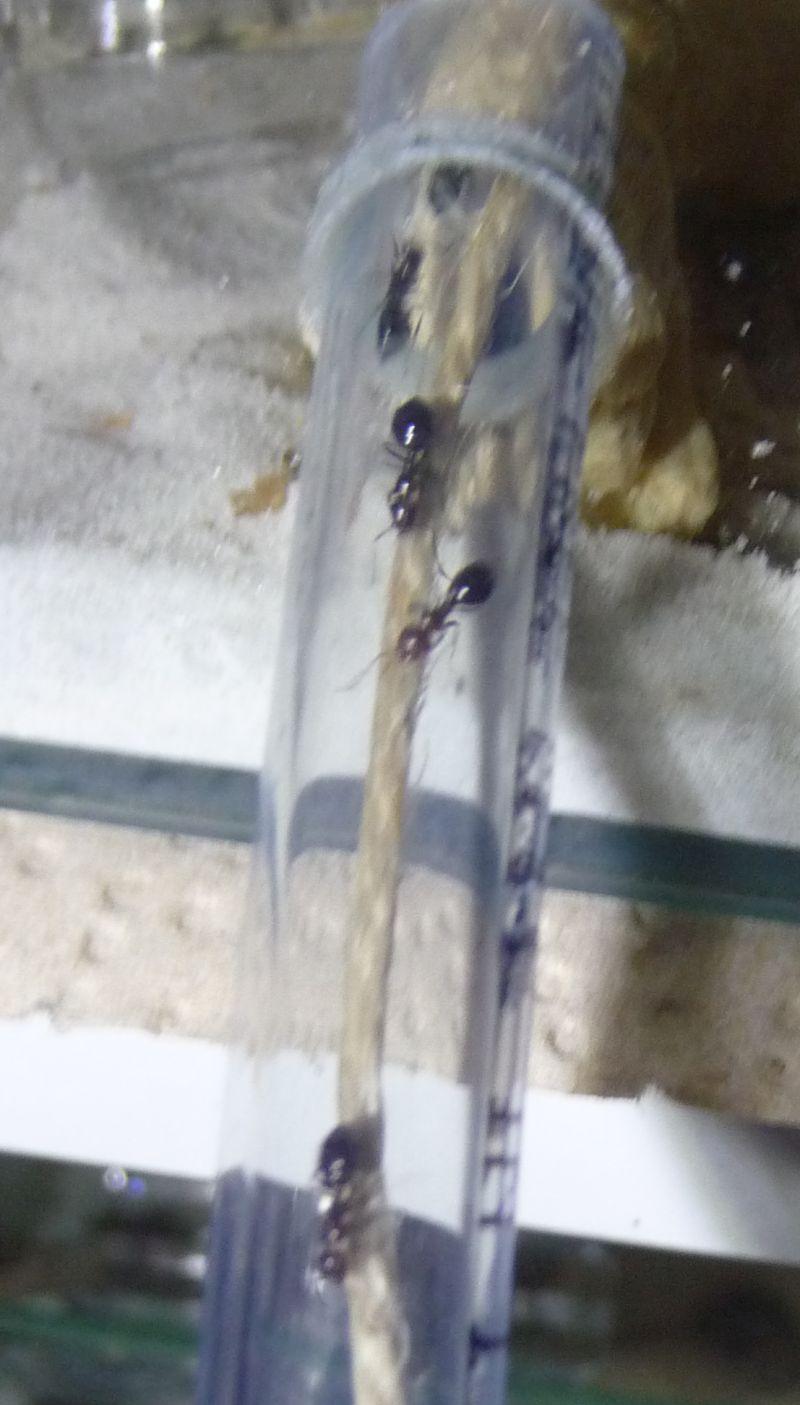
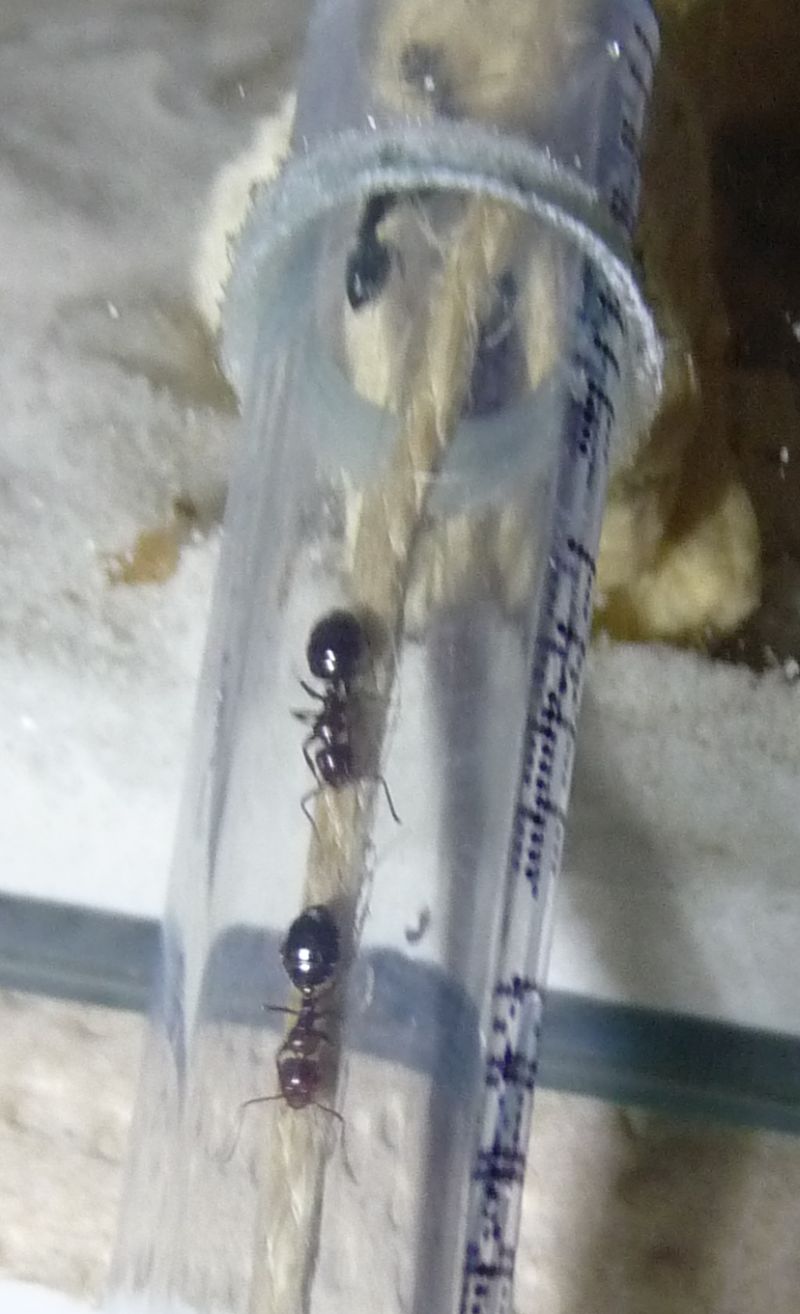
The difference a heated flat makes!
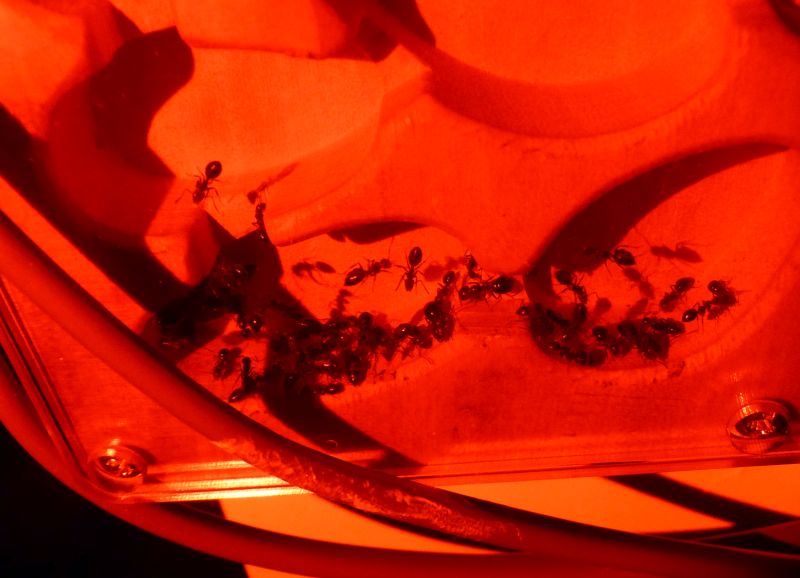
Edited by Ernteameise, October 7 2025 - 11:19 AM.
This is amazing!
In just a few hours, just by applying gentle heating, the colony has now settled in.
I am so proud of my beautiful and clever girls.
Here is most of the colony, there are quite a few left in the bivouac
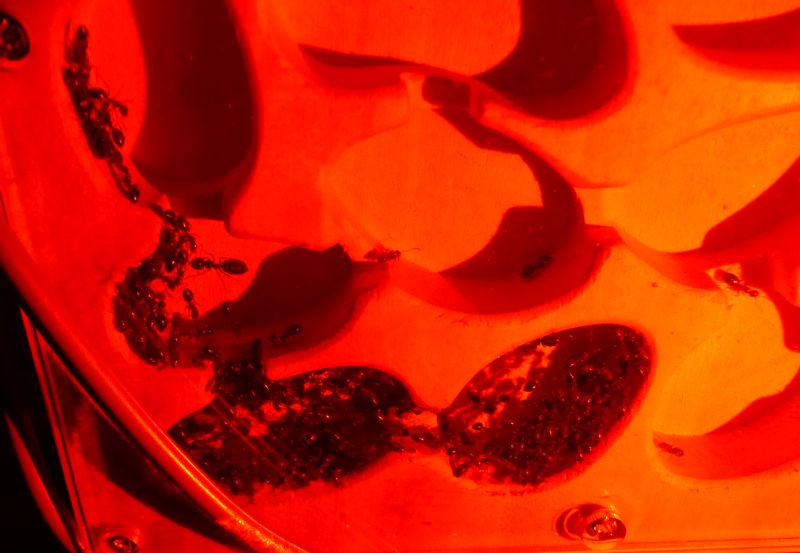
Workers and some brood
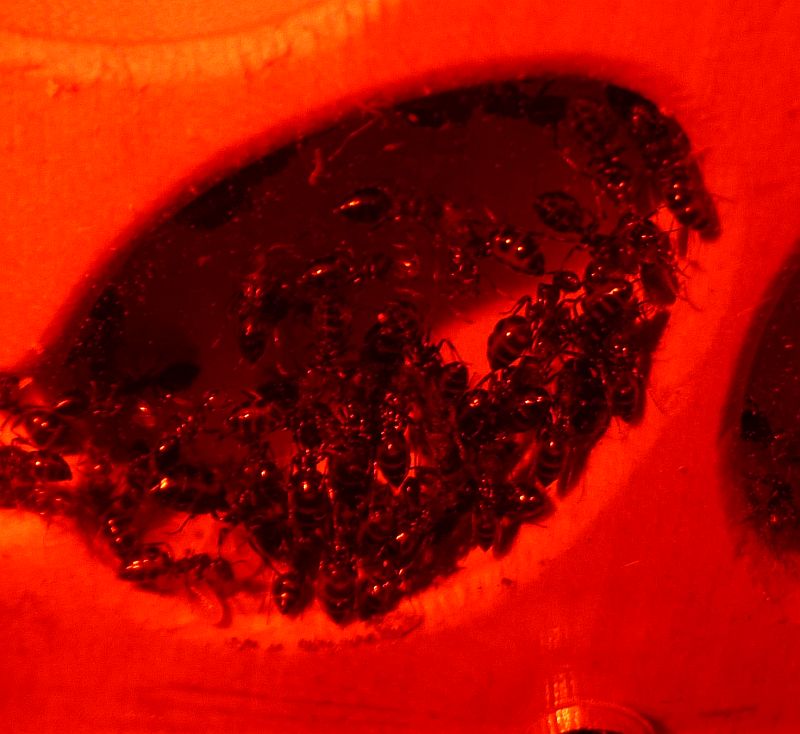
And the queen and most of the brood, right next to the heating cable (the queen is the big one right in the middle)
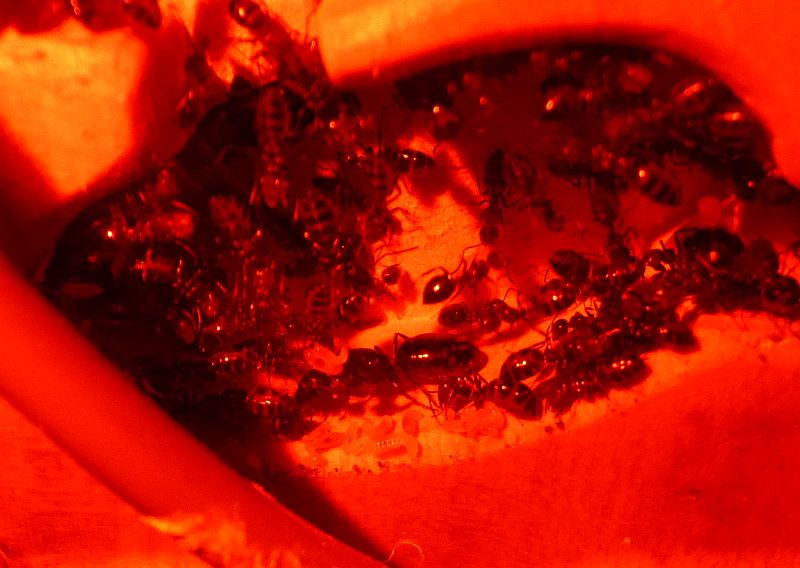
The have officially moved in now.
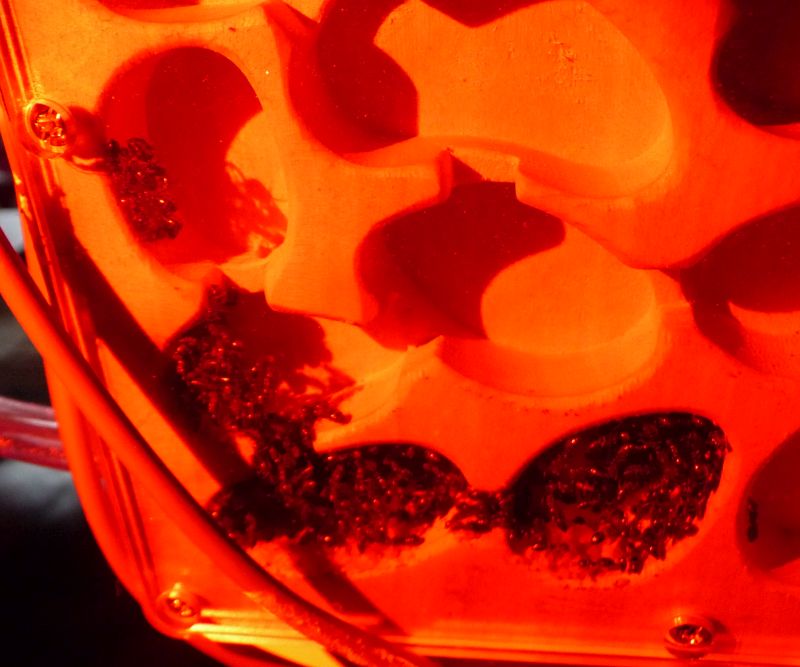
And they have tons of brood!
The small larvae are the ones they will hibernate with, but the larger ones should still hatch now.
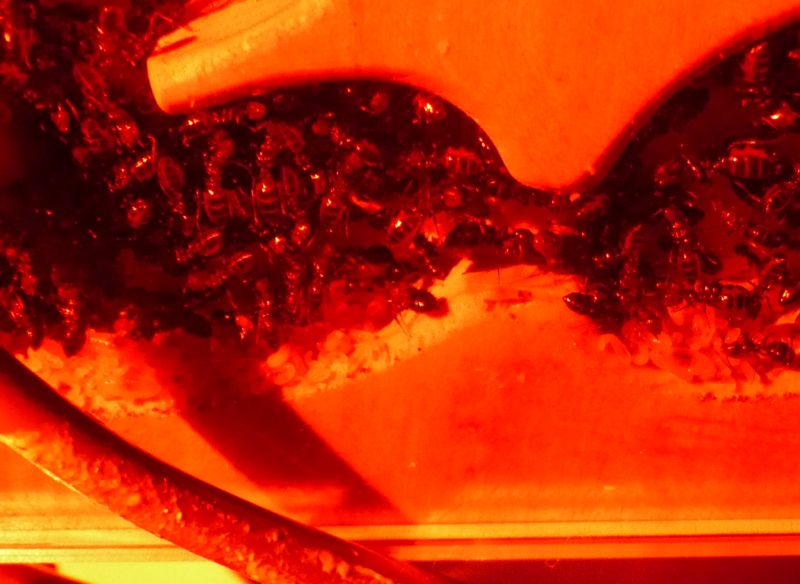
One further observation-
if you look at the pictures above, the queen had been still pretty physiogastric.
This morning, I realized that she had laid ANOTHER BATCH OF EGGS.
From reading Camponotus journals on here, I have learned that 1. they have a fixed number of egg-laying cycles in the year and when they have finished laying, they 2. will become ready for hibernation, their winter pause is basically programmed genetically. So my C. lateralis queen here had not quite finished yet, and the new eggs will very likely be the larvae which are planned to go into diapause arrested development. I checked online, and it seems to be common to give these ants a shorter diapause, ranging from end of November to March.
Which makes sense, I will keep them on heat until they have advanced the brood development of the larger larvae in their care.
As you can see, this colony has a nice large pile of brood, so I hope they will grow some more next year.
They will not form large colonies, but from reading journals online, several hundred workers are possible.
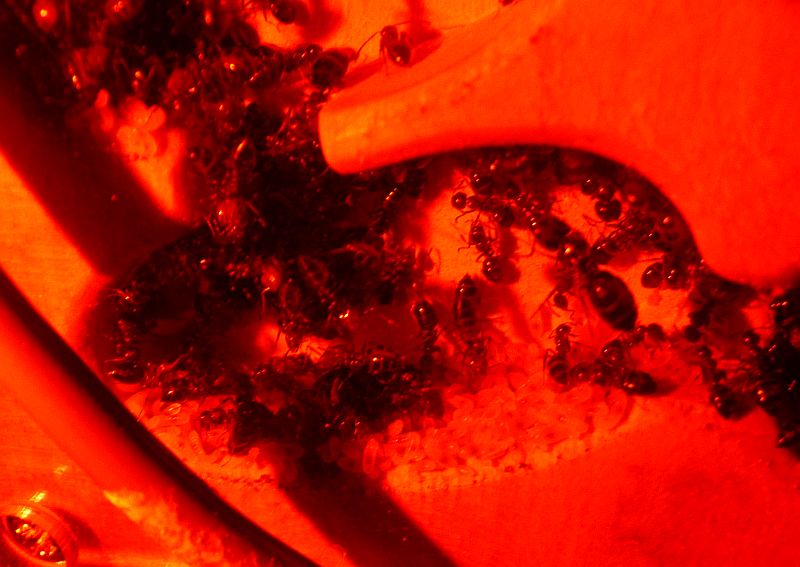
0 members, 0 guests, 0 anonymous users